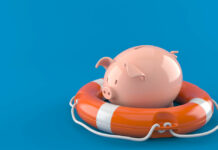To many people, building credit looks like a catch-22. In order to get a loan, you already need to have a score and some credit history. Fortunately, getting your first credit score isn’t as difficult as it looks on the surface. Here are the simple steps you can take to get a credit score for the first time and begin building a good credit history, even if you’ve never borrowed a dime before in your life.
Get a Secured Credit Card
The easiest financial product to start your credit history with is a secured credit card. These cards allow you to put a deposit down with a credit company, then draw against that deposit as your line of credit. If you deposited $300, for example, your monthly credit line would be $300. This system makes it possible for credit card companies to extend credit at essentially zero risk to borrowers with no existing credit history. When selecting your secured credit card, it’s best to choose a card that won’t require a credit inquiry. Since inquiries bring down your credit score, avoiding one will help you get the highest possible first score.
Use Your Card, but Pay in Full Each Month
In order to establish credit, you’ll need to charge purchases to your card on a monthly basis. The trick, though, is to pay off your card in full every month. By doing this, you’ll show the credit card company that you’re spending within your means and using your new credit line responsibly. This, in turn, will translate to a higher score down the line. Be sure not to miss any of your payments, since a missed payment will have a significant negative impact on your score. As a rule, it will take about six months for you to get a credit score, assuming you have no existing credit history.
Keep Your Credit Utilization Low
By simply using and paying off your card on a monthly basis, you’ll eventually get your first credit score. There is, however, a simple strategy you can use to ensure that your first score is as high as possible. By keeping the ratio of your spending to your total credit limit as low as possible, you’ll help to drive your score up. This ratio is known as your revolving credit utilization, and it is one of the major metrics used by credit rating agencies to generate your score. In fact, credit utilization makes up 30 percent of your total score.
If you can keep this utilization low, you can increase your score significantly. Anything over 30 percent utilization is considered high, but it’s best if you can keep it under 10 percent. A simple trick for doing this is to pay off most of your outstanding balance before your statement comes each month. Since the credit agencies typically use the balance from your most recent statement to measure your utilization rate, paying all but a small amount before your statement date can buoy your score.
Once You Get a Credit Score, Keep Building Your History
About six months after getting your secured credit card, you should receive your first credit score. Once this happens, you can start building out your credit history with other credit products. An installment loan on a vehicle or a non-secured card, for instance, will create another active account on your history. Continue to make payments regularly and avoid building up debt, and you’ll gradually improve your credit score. The longer your accounts remain open, the better your overall history will eventually become.
By following these simple steps, you can not only get your first credit score but also make sure it’s fairly good. Escaping the trap of credit invisibility can seem challenging, but this approach will help you easily establish credit. From there, it’s just a matter of using your newfound credit responsibly and continuing to build your score over time.
Tax season is just around the corner. Check out 10 Tips for First Time Tax Filers.
The post How to Get Your First Credit Score appeared first on Cartageous.









